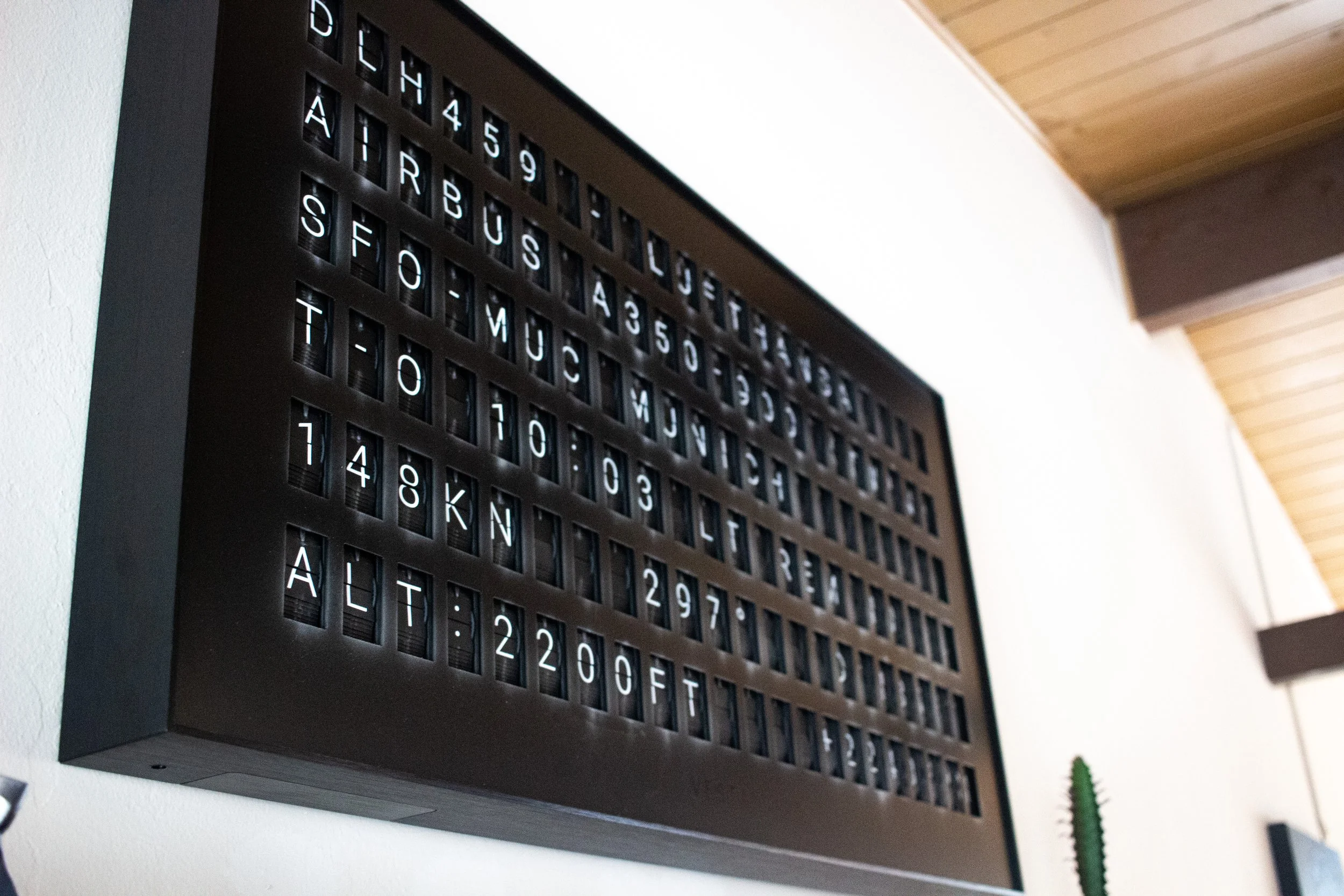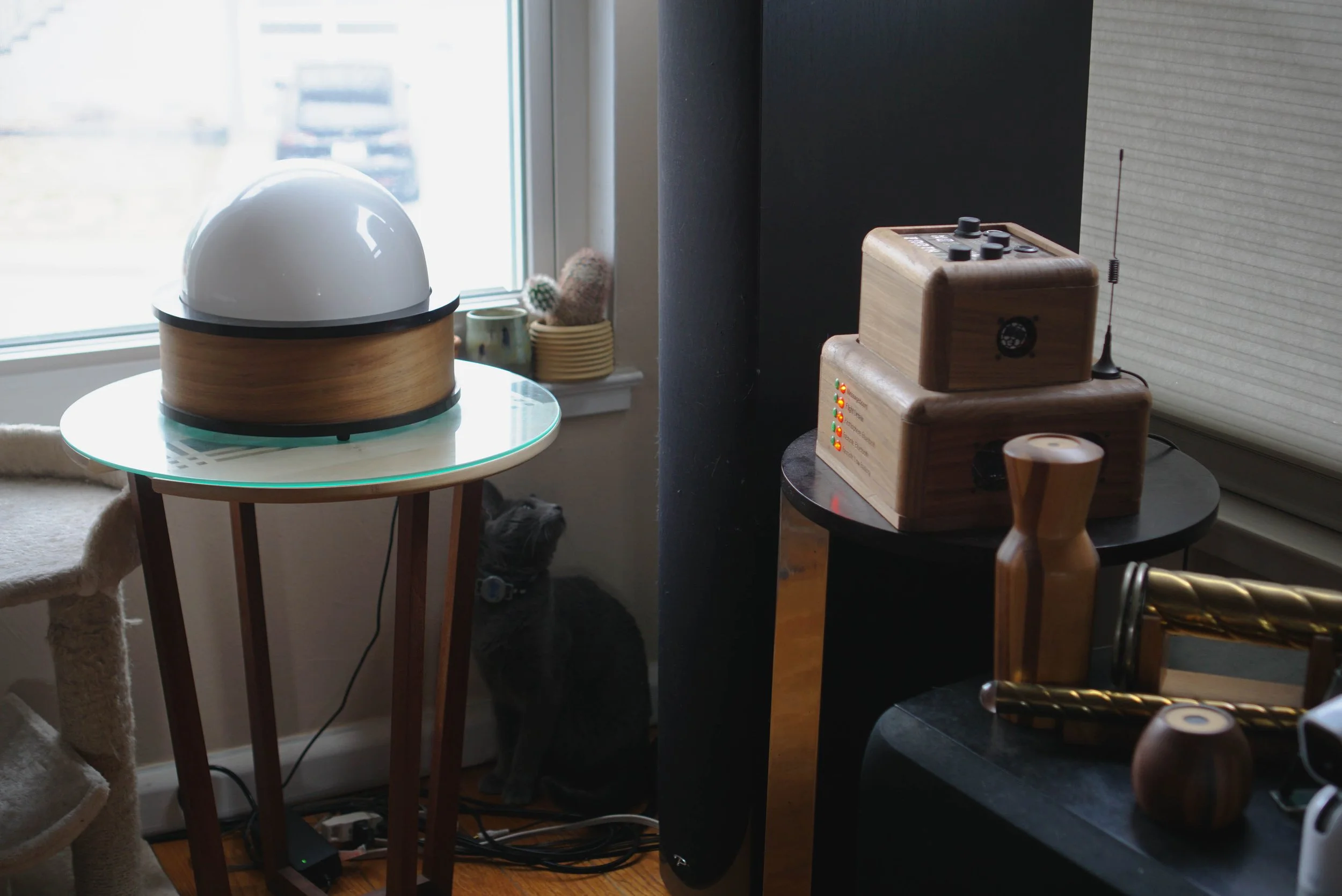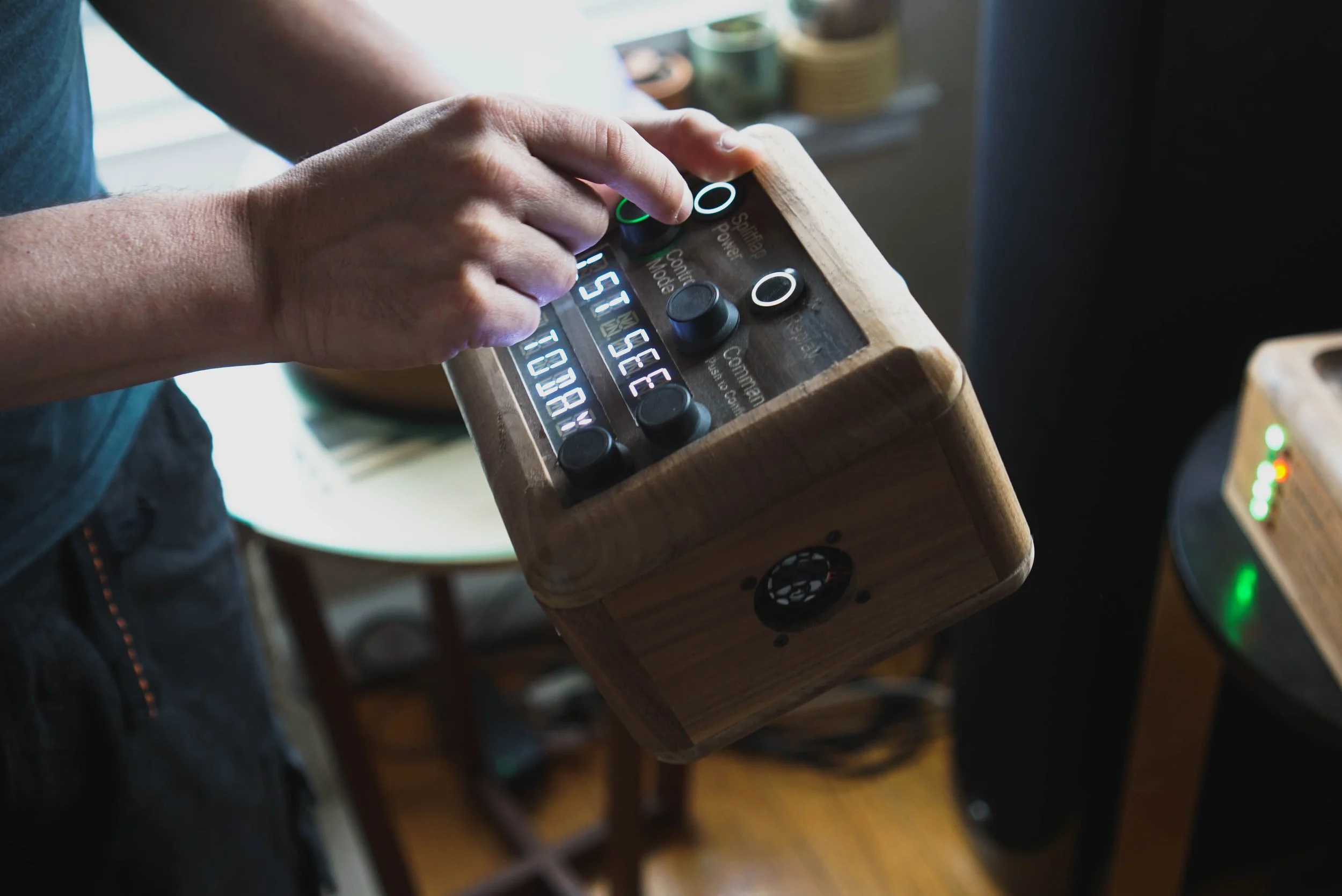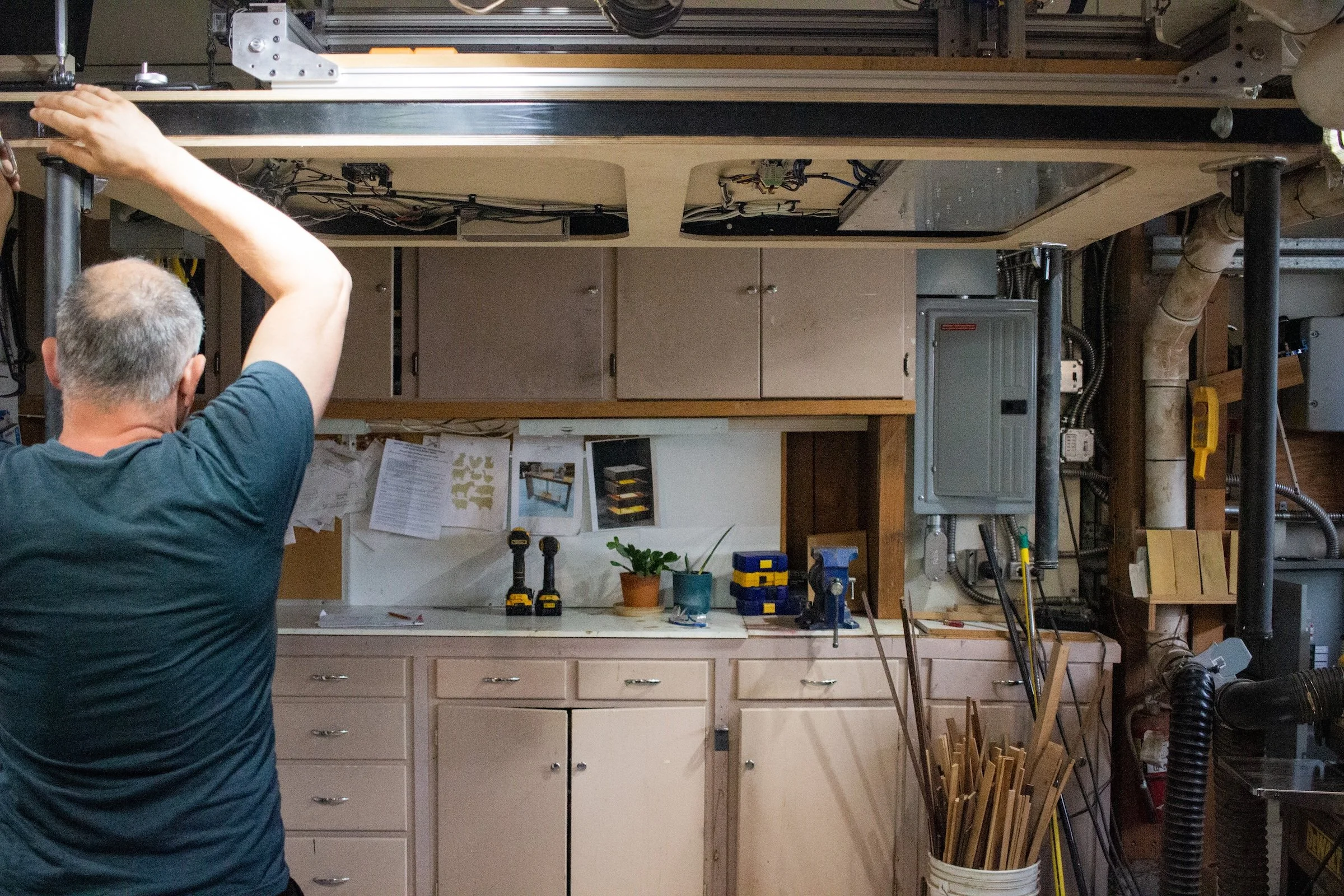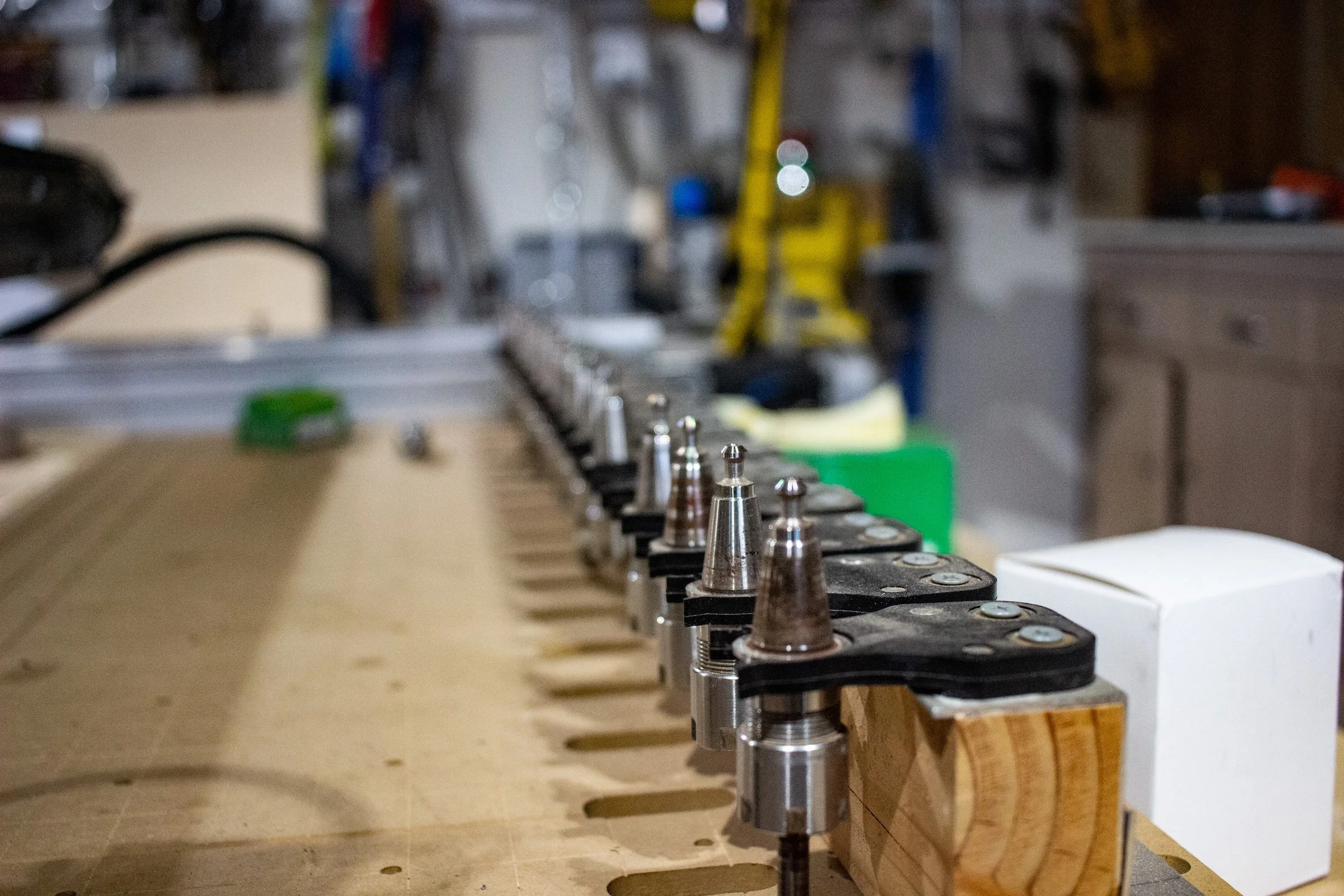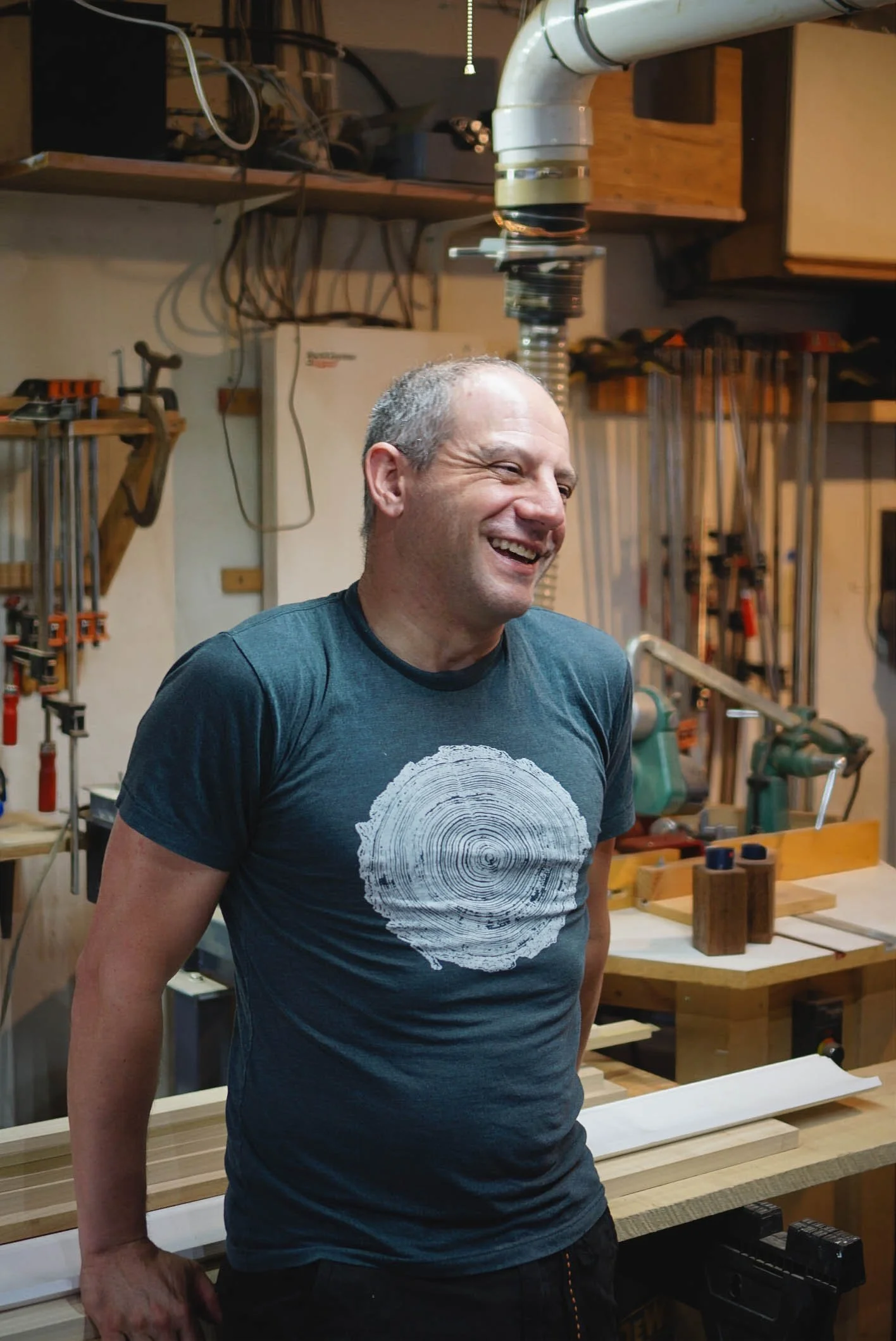About two years ago, a colleague introduced me to Mason Friedberg with this enticing line: “He designs cool stuff at the Exploratorium and is thinking of starting his own project featuring craftsmanship”; over the following months, Mason and I met a few times to discuss art & craft. While I was flattered to be one of their topics, I also truly enjoyed getting to know him and learning (and seeing) more of the “behind the scenes” at my favorite local museum, and one of the best hands-on science museums of all time, San Francisco’s Exploratorium.
What follows below is taken verbatim (with permission) from Mason’s writeup of our discussions, with all of the photography credited to him & Edwin Lai. To see more of his interviews and work, check him out at Craftwork.Collective.
From Tech to Tools
A Home Shop Hidden In Silicon Valley
When you wake up in San Francisco, you never know if the sun will be out, or if the rolling neighborhood hills will be covered in fog instead. Luckily, when heading down to South San Francisco on a cool July morning to see our buddy David Wertheimer and get a tour of his shop, Branching Out Wood, there proved to be a bit more sunshine. And it was the perfect time of day for the soft light rays of the morning to frame the dark grain of his many unique and finely crafted wooden pieces around his home – a passion years in the making.
The craft of woodworking can create many enticing, useful, and artistic pieces, but for David, he finds his element in visual displays that he accentuates with finely thought out housings, cabinetry, and user interactions. Think LED roulette Shakespearean insult-generator or super retro-modern nixie tube clocks.
An East Coast native from upstate New York, David Wertheimer moved out to the Bay for the same reason as many who make this journey: tech. But after years in the industry at some well-known companies, his longtime love of woodworking pulled him away from the political hustle and bustle of Silicon Valley, and into the meditative stronghold of his garage.
“I always had the fantasy of quitting my day job and doing stuff for myself…I started thinking, ‘You know, I could probably make it work’”
He took some time away from work and spent some of that volunteering at Habitat for Humanity, to give back to the community, stay active, and ultimately meet some people from the trades. After connecting with a contractor who he had worked with for some home remodeling offered him a job, he was off to the races.
David frankly noted that, in the beginning, you need to take on some work that you know is below your value. “A small job, but a little bit of a confidence booster. That and coming up with some products really got me going.” He reminisces about the first project he did that was installing simple cabinetry in someone’s home. From there, he moved to full blown custom projects for clients, intentional pieces for friends, and, of course, well thought-out personal projects for home.
Like many creatives, David often buys his materials—in his case, the display technologies—before he knows what he will do with them or what the final vision is. Sometimes it is just about finding a piece you think is interesting, even when you don’t know what it will become. Oftentimes you end up adapting your piece to it.
It’s hard not to notice the large split-flap display over David’s fireplace, right above a custom mantle repping a beautiful natural wood grain that he made for his home. As it turns out, his house is right under the flight paths of San Francisco International Airport. Inspired by his dad’s excited demeanor of when he pointed out where the flights were going when he saw them, David embarked to make something that would find flight path information and map it on the split-flap display. In short, he created a geofencing device housed in a homemade enclosure which pairs with a beautiful hand- control module, and works together to display the path information of each flight above the fireplace. It’s the perfect example of his draw toward peculiar visual displays.
“... he realized that he needed to make it himself to get exactly what he had envisioned.”
I remember very distinctly the first time I met David and we discussed his work. It was something he said that made us both light up as he was talking about his bookshelf that he made for his home office. He talked about how after a long and disappointing search for something that fit what he was looking for in that space, he realized that he needed to make it himself to get exactly what he had envisioned. Not a surprise, as often is the case for our kind.
We asked to head down to the shop where all of the visioning” happens…
When you first come into the unlit shop, it almost looks like it hasn’t been used for years, but as soon as David turns the lights on, there is an immediate warmth and intentionality to the layout. Routers, sanding belts, and clamps against one wall. A strategically placed table saw near the middle. Even a small welding station in the corner for the metal work that David has brought in-house, witnessing to the new skills that he tasks himself with learning along the way. Added one by one along the way, each tool opened up new technical and creative possibilities for David.
But perhaps the most fascinating thing about David’s shop, and you would even miss it if you only took a quick glance, is his homemade CNC machine that hangs from the ceiling. Out-of-sight and out-of-mind when not needed, it drops down on a simple pulley system when unclipped from some tension cables holding it up. This instrument is what really lets him take his work to the next level. Another example of that craftsman mindset, “There was no such machine that had all the capabilities I wanted, but [without] so much weight. So I bought all the components and built it myself.” It reminds us a lot of his work: fully custom.
We inquire about what it takes to get started making at home as a hobbyist. He says that to get started on your own, you don’t need much: a few power hand tools such as a chop saw and hand drill. But if you really want to start pushing the boundaries of what you can do at home, know that his table saw and router have been his famed work horses for most projects.
“At this point we are all smiling and giggling as we revisit the idea of hoarding something you like and figuring out what to do with it later.”
In his back room where he works on electronics components for his pieces, there are multiple racks of ‘bits and bobs’.There is nothing that can make a piece more special than a stumbled upon knob or handle. “Some of them are really useful stuff…I bought them in Nepal, but I think they are Tibetan? Old style locks. Animals that are made into locks.” At this point we are all smiling and giggling as we revisit the idea of hoarding something you like and figuring out what to do with it later.
Something David takes seriously, that resonates with many crafts, is the idea of wasting as little material as possible. “It’s a bit of a struggle sometimes. Cut-offs, long strip pieces that I ripped. Sometimes I have enough pieces and the time and mindset to do this: I take all the long strips and make them into something else.” He holds up sets of coasters he glued up from scraps of beautiful hardwoods he has worked with over a multiplicity of projects. Pristine and practical.
When asked if he considers himself a craftsman, he confidently answers “yes”. But he admits that for him, the line between craftsman and artist is blurred. “When someone justh as a blank canvas and asks me to make‘something bold or curvaceous’, that’s more challenging, but if someone comes with a very rough sketch, I will take that and transform that into something buildable that meets their needs.
Whether craftsman or artist, or anything in between, his work speaks for itself, and his journey screams “making things my own”. Whatever the official title, we are excited to see more of what comes from Branching Out Wood.





